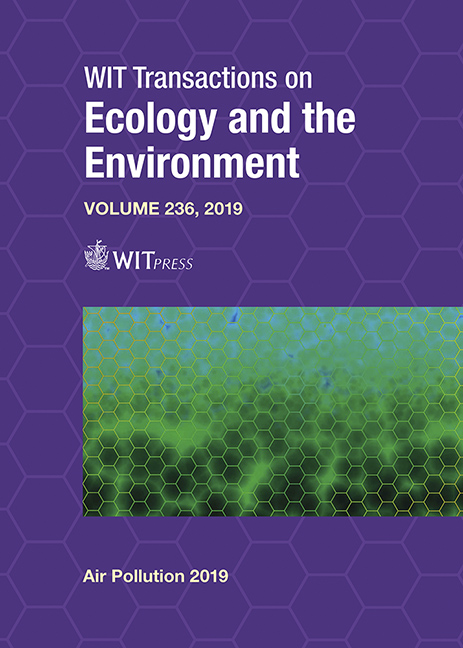NANOTECHNOLOGY-BASED CONTROL OF HAZARDOUS AIR POLLUTANTS EMISSION: PILOT SCALE TRIALS FOR SIMULTANEOUS CAPTURE OF H2S, NH3, AND ODOURS FROM LIVESTOCK FACILITIES
Price
Free (open access)
Transaction
Volume
236
Pages
8
Page Range
171 - 178
Published
2019
Size
394 kb
Paper DOI
10.2495/AIR190171
Copyright
WIT Press
Author(s)
GUADALUPE VALDES LABRADA, SURAJ KUMAR, BERNARDO PREDICALA, MEHDI NEMATI
Abstract
Generation and emission of hazardous gases such as hydrogen sulphide (H2S), and ammonia (NH3 from industrial settings and livestock production facilities represent one of the major air pollution challenges. Traditional approaches like physicochemical processes used in industrial settings, and diet manipulation, manure confinement, and addition of inhibitors commonly employed in livestock operations are associated with technical drawbacks, excessive cost, inability to completely eliminate pollutants, and difficulty of implementation on a small scale. Thus, there is a need for development of more effective and feasible technologies. One such innovative approach is the use of nano-based adsorbents to mitigate the emission of these air pollutants. Effective capture of individual H2S and NH3 using metal oxide nanoparticles (ZnO and TiO2) have been reported in our earlier work. To evaluate the potential for wider applications, we have now investigated simultaneous capture of NH3, H2S, and odours by a mixture of ZnO and TiO2 nanoparticles and a tailor-made composite adsorbent (ZnO and TiO2 nanoparticles deposited on activated carbon). Laboratory work with pre-mixed gases of various compositions revealed that an increase of H2S and NH3 concentrations led to higher adsorption capacities with both nano-adsorbents. Higher temperatures enhanced the adsorption of H2S but led to lower adsorption capacities for NH3. Characterization of adsorbents through CNHS analyses, thermogravimetry, FT-IR and XRD revealed that ZnO and TiO2 both adsorbed NH3 and H2S. While ZnO had a much higher affinity for H2S through chemisorption, TiO2 was more effective in adsorption of NH3 by physisorption. Results from trials conducted in a semi-pilot scale adsorption system fed with swine manure gases, and those in a livestock research facility where a nano-based circulation–filtration system was deployed in a real situation confirmed the effectiveness of nano-adsorbents in capture of NH3, H2S, and odours from representative gases in real settings.
Keywords
ammonia, hydrogen sulphide, odour, nano-based emission control, pilot trial





